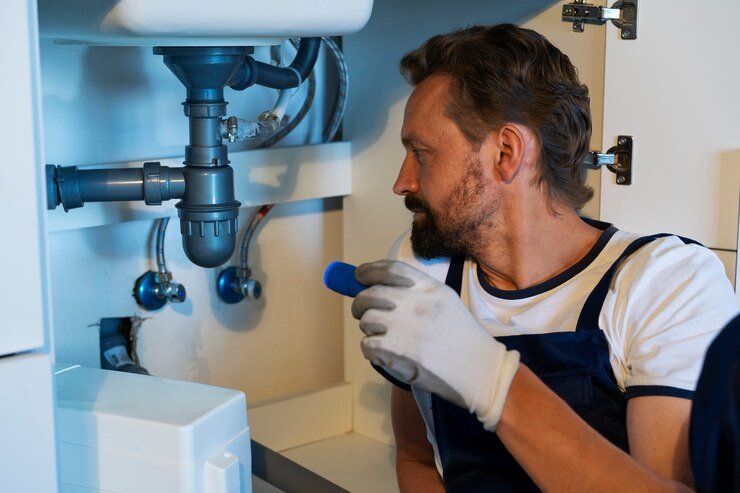Backflow prevention is a critical aspect of plumbing systems that ensures water remains safe and contamination-free. Plumbing systems are responsible for directing water to various fixtures in residential and commercial settings, including faucets, toilets, and appliances. However, water can flow backward under certain conditions into the system, bringing harmful contaminants. We will explore the role of a plumber in managing backflow prevention, emphasizing their crucial tasks, responsibilities, and the measures they take to keep water supplies safe. By examining the steps a plumber in Las Vegas NV takes to install, maintain, and repair backflow prevention devices, we can better understand why these professionals are so vital in preventing health risks associated with water contamination.
Understanding Backflow and Its Dangers
Backflow occurs when water flows in the opposite direction from its intended path in a plumbing system. Normally, water flows from the main supply line into the home’s or business’s plumbing system, but when backflow happens, contaminated water can flow back into the public water supply. This reversal can occur due to changes in pressure, such as when water supply pressure drops during a fire or an unexpected event. The primary concern with backflow is that it can introduce dangerous substances like chemicals, waste, or bacteria into the water system, making it unsafe for consumption. Plumbers play a crucial role in identifying the potential risks of backflow and preventing these issues before they compromise the health and safety of the inhabitants. They are tasked with understanding the specific dynamics of plumbing systems and knowing how to prevent the contamination of clean water.
Installation of Backflow Prevention Devices
One of the key roles a plumber plays in backflow prevention is the installation of backflow prevention devices. These devices are specifically designed to ensure water does not flow backward into the system, which is essential for maintaining the cleanliness and safety of the water supply. Plumbers install these devices at critical points in the plumbing system, such as where water enters the property or near certain appliances that could contribute to contamination if backflow occurs. Common types of backflow prevention devices include check valves, air gaps, and pressure vacuum breakers. The installation ensures these devices are correctly placed and calibrated to function effectively under various conditions. A plumber must understand local plumbing codes and regulations to ensure proper installation meets safety standards.
Routine Maintenance and Inspections
Plumbers are also responsible for maintaining and inspecting backflow prevention systems. Over time, backflow prevention devices can wear out or become less effective, so regular maintenance and inspections are essential. A plumber will examine the devices for signs of wear or damage and check that they function as intended. Maintenance might include cleaning the devices, replacing worn parts, and testing the systems to ensure that they are capable of preventing backflow. Plumbers also assess the overall plumbing system to identify potential backflow risks, such as improperly installed valves or pipes that could fail under pressure. Routine maintenance keeps the devices working properly and helps prevent costly repairs or water contamination incidents in the future. A proactive maintenance schedule ensures the system remains in good working order year-round.
Addressing and Repairing Backflow Problems
In some cases, despite best efforts at installation and maintenance, backflow problems can still occur. A plumber is essential in diagnosing and fixing these issues quickly and effectively. When a backflow incident happens, the plumber will first identify the source of the problem, which could involve checking for damage to the backflow prevention devices, faulty piping, or other system issues. The plumber may need to replace or repair system components to restore the proper flow direction and eliminate contamination risks. If the problem is severe, such as significant contamination, the plumber will also coordinate with local water authorities to ensure the water supply is safe for use again. Effective repair work by a qualified plumber can prevent the spread of contaminants and help avoid health risks related to waterborne diseases.
Ensuring Compliance With Local Regulations
Backflow prevention is not just a matter of safety but also legal compliance. Many local governments have strict regulations to ensure that plumbing systems meet certain standards, especially regarding backflow prevention. Plumbers are vital in ensuring all installed devices align with these regulations. This may involve understanding the local building codes, health regulations, and water supply standards. A plumber must stay up-to-date with any changes to these laws and ensure that the systems they install or maintain are compliant. Failure to adhere to these regulations can result in penalties, legal issues, or even the contamination of the public water supply. By working closely with regulatory authorities, a plumber ensures that the backflow prevention systems they manage are safe, effective, and within legal requirements.
The role of a plumber in dealing with backflow prevention is indispensable to ensuring that water systems remain safe and secure. Through installing, maintaining, and repairing backflow prevention devices, plumbers help protect individual households and the broader community from the dangers of water contamination. Their understanding of plumbing systems, local regulations, and health risks makes them integral in keeping water supplies free from harmful substances. By educating property owners and adhering to strict codes, plumbers foster a safer and healthier environment for everyone. The importance of their work cannot be overstated, as proper backflow prevention ultimately ensures the safety and well-being of society’s water systems.
